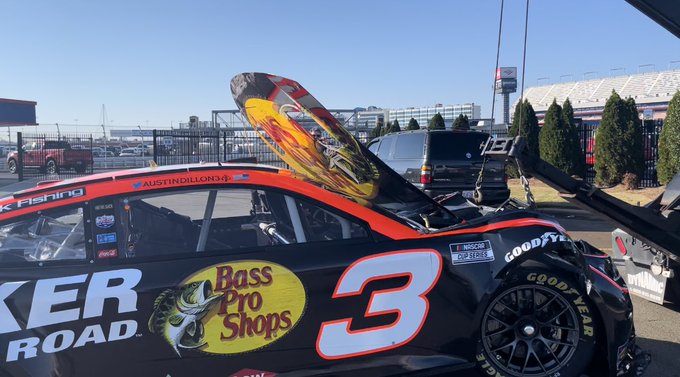
Getty Denny Hamlin takes part in a Next Gen Test.
The sanctioning body has made a change to the planned Next Gen test schedule. NASCAR took one test away from Las Vegas Motor Speedway and added another at the Charlotte Motor Speedway oval.
NASCAR provided the update on Wednesday, November 24. The press release noted that the planned session for Phoenix Raceway will now take place on January 25-26 instead of December 14-15. This January session will replace the planned test at Las Vegas Motor Speedway.
Additionally, NASCAR added another two-day organizational test at Charlotte Motor Speedway. The drivers and their teams will head to the oval track on December 15 and 17. There will be a planned “cold” day between the sessions so that the teams can analyze their data.
According to FOX Sports reporter Bob Pockrass, there will be a one-day organizational test on December 7 or 8. However, this will be a limited session featuring one car from each OEM.
The Last Test Featured Pit Stops
NASCAR teams took part in a two-day organizational test at Charlotte Motor Speedway on November 17-18. The majority of teams simply took laps around the oval while making adjustments and examining the data, but others tried out some pit stops.
The teams behind the No. 3 Richard Childress Racing Chevrolet, the No. 7 Spire Motorsports Chevrolet, the No. 9 Hendrick Motorsports Chevrolet, and the No. 24 Hendrick Motorsports Chevrolet all took part in live pit stops during the final hour of the test on November 18.
The teams changed the 18-inch, one-lug wheels and filled the stock cars with fuel, but they didn’t fully use the same level of intensity. The crew members actually took more time to ensure that every tire was secure before sending the cars back out on the track.
“The good news, it’s hard,” Skip Flores, a veteran Cup Series tire changer, told Corey LaJoie on the “Stacking Pennies” podcast. “I think everybody thought it was going to be easier. The hard things are pulling the tires — there are big brakes — and the tire sits deeper inside of the car.
“The face of the wheel now is further out than what our old tires were. And the barrel of the wheel, per se, goes in about eight inches further over the suspension than what our old tires did.”
Drivers Will Try to Avoid Test-Altering Collisions
A prominent storyline from the previous test at Charlotte Motor Speedway involved the No. 3 Chevrolet. Austin Dillon got into the wall early on November 17, forcing the team to remove his stock car from the track on a tow truck.
The incident occurred within the first 20 minutes of the 11-hour session, so Richard Childress Racing had the opportunity to rebuild the stock car and get it back onto the track. They hauled it to the team facility and replaced the left-front quarter panel, the tail, front fascia, hood, splitter, front clip, engine, and front suspension. Dillon was able to take part in the last hour of the session thanks to their efforts.
There were questions about the safety level of the stock cars, and Dillon put them to the test. He hit the wall in what NASCAR called an “above-average impact” based on the data. He avoided injury and spent a relatively short amount of time in the infield care center before having the opportunity to make some more runs.
“When the incident happened, we actually left our spot in The Speedway Club and drove over there,” said John Probst, NASCAR’s senior vice president of racing innovation, per NASCAR Media. “We talked to the first responders. They said (Dillon) was already out of the car. Then we went to see him in the infield care center. He had already been released before we could get there.
“So, yeah, it was a really good feeling knowing that the car performed as designed. Looking at the front bumper on it, looked like it crushed the way it was designed to do.”
READ NEXT: Brad Keselowski Proposes Ideal Cup Series Championship Format
